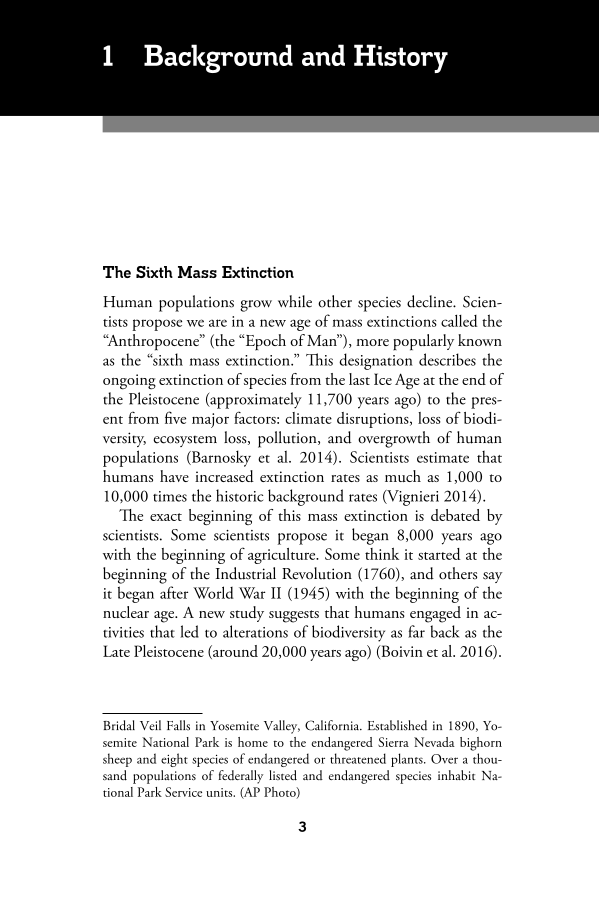FMH
3
Background and History 1
Bridal Veil Falls in Yosemite Valley, California. Established in 1890, Yo-
semite National Park is home to the endangered Sierra Nevada bighorn
sheep and eight species of endangered or threatened plants. Over a thou-
sand populations of federally listed and endangered species inhabit Na-
tional Park Service units. (AP Photo)
The Sixth Mass Extinction
Human populations grow while other species decline. Scien-
tists propose we are in a new age of mass extinctions called the
“Anthropocene” (the “Epoch of Man”), more popularly known
as the “sixth mass extinction.” Th is designation describes the
ongoing extinction of species from the last Ice Age at the end of
the Pleistocene (approximately 11,700 years ago) to the pres-
ent from fi ve major factors: climate disruptions, loss of biodi-
versity, ecosystem loss, pollution, and overgrowth of human
populations (Barnosky et al. 2014). Scientists estimate that
humans have increased extinction rates as much as 1,000 to
10,000 times the historic background rates (Vignieri 2014).
Th e exact beginning of this mass extinction is debated by
scientists. Some scientists propose it began 8,000 years ago
with the beginning of agriculture. Some think it started at the
beginning of the Industrial Revolution (1760), and others say
it began after World War II (1945) with the beginning of the
nuclear age. A new study suggests that humans engaged in ac-
tivities that led to alterations of biodiversity as far back as the
Late Pleistocene (around 20,000 years ago) (Boivin et al. 2016).


































































































































































































































































































































































































































